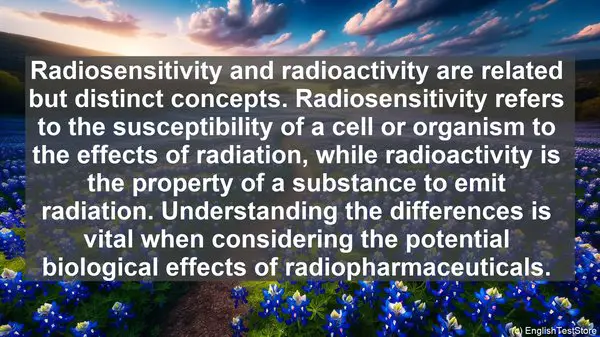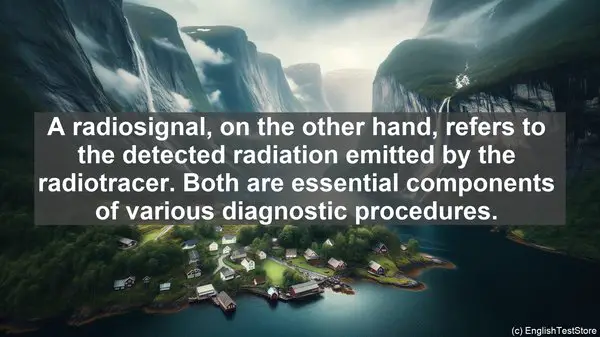Introduction
Welcome to today’s lesson. In the field of radiopharmaceuticals, there are several words that often cause confusion. Understanding these words correctly is crucial for effective communication and ensuring patient safety. So, let’s dive into the top 10 commonly confused words in radiopharmaceuticals.
1. Radioisotope vs. Radiopharmaceutical
The terms ‘radioisotope’ and ‘radiopharmaceutical’ are often used interchangeably, but they have distinct meanings. A radioisotope is an atom with an unstable nucleus that emits radiation, while a radiopharmaceutical is a drug that contains a radioisotope. So, while a radioisotope is a component of a radiopharmaceutical, they are not the same thing.
2. Half-Life vs. Shelf-Life
Another common confusion is between ‘half-life’ and ‘shelf-life.’ The half-life of a radioisotope is the time it takes for half of the atoms in a sample to decay, while the shelf-life of a radiopharmaceutical is the time it can be stored before it degrades. So, half-life relates to the radioisotope’s decay, while shelf-life refers to the radiopharmaceutical’s stability.
3. Syringe vs. Vial
Syringes and vials are both common in radiopharmaceutical preparations, but they serve different purposes. A syringe is used for drawing and administering the radiopharmaceutical, while a vial is the container that holds the radiopharmaceutical. It’s essential to use the right terminology to avoid any confusion during discussions or instructions.
4. Dilution vs. Concentration
Dilution and concentration are opposite processes. Dilution involves adding a solvent to decrease the concentration of a solution, while concentration refers to increasing the amount of solute in a solution. In radiopharmaceuticals, accurate dilution or concentration is crucial for achieving the desired dosage.

5. Expiration Date vs. Calibration Date
The expiration date and calibration date are both important in radiopharmaceuticals but signify different things. The expiration date indicates when the radiopharmaceutical should no longer be used due to potential degradation or loss of potency. On the other hand, the calibration date is when the instrument used for measuring radioactivity was last calibrated for accurate readings.
6. Contamination vs. Cross-Contamination
Contamination refers to the presence of an unwanted substance in a sample or environment. Cross-contamination, on the other hand, occurs when a substance is unintentionally transferred from one source to another, potentially leading to inaccurate results or compromised safety. Vigilance in preventing both types of contamination is crucial in radiopharmaceutical settings.
7. Radiosensitivity vs. Radioactivity
Radiosensitivity and radioactivity are related but distinct concepts. Radiosensitivity refers to the susceptibility of a cell or organism to the effects of radiation, while radioactivity is the property of a substance to emit radiation. Understanding the differences is vital when considering the potential biological effects of radiopharmaceuticals.
8. Isotope vs. Isomer
Isotopes and isomers are often confused terms. Isotopes are atoms of the same element with different numbers of neutrons, while isomers are molecules with the same chemical formula but different structural arrangements. In radiopharmaceuticals, isotopes play a crucial role in imaging or therapy, while isomers can affect a drug’s pharmacokinetics.
9. Radiotracer vs. Radiosignal
Radiotracer and radiosignal are terms used in nuclear medicine. A radiotracer is a radioactive substance that is administered to a patient for imaging or functional studies. A radiosignal, on the other hand, refers to the detected radiation emitted by the radiotracer. Both are essential components of various diagnostic procedures.
10. Scintigraphy vs. SPECT
Scintigraphy and SPECT (Single-Photon Emission Computed Tomography) are imaging techniques used in nuclear medicine. Scintigraphy refers to the general method of obtaining images using radiotracers and detectors. SPECT, on the other hand, is a specific type of scintigraphy that provides three-dimensional images. So, while all SPECT scans are scintigraphy, not all scintigraphy is SPECT.

